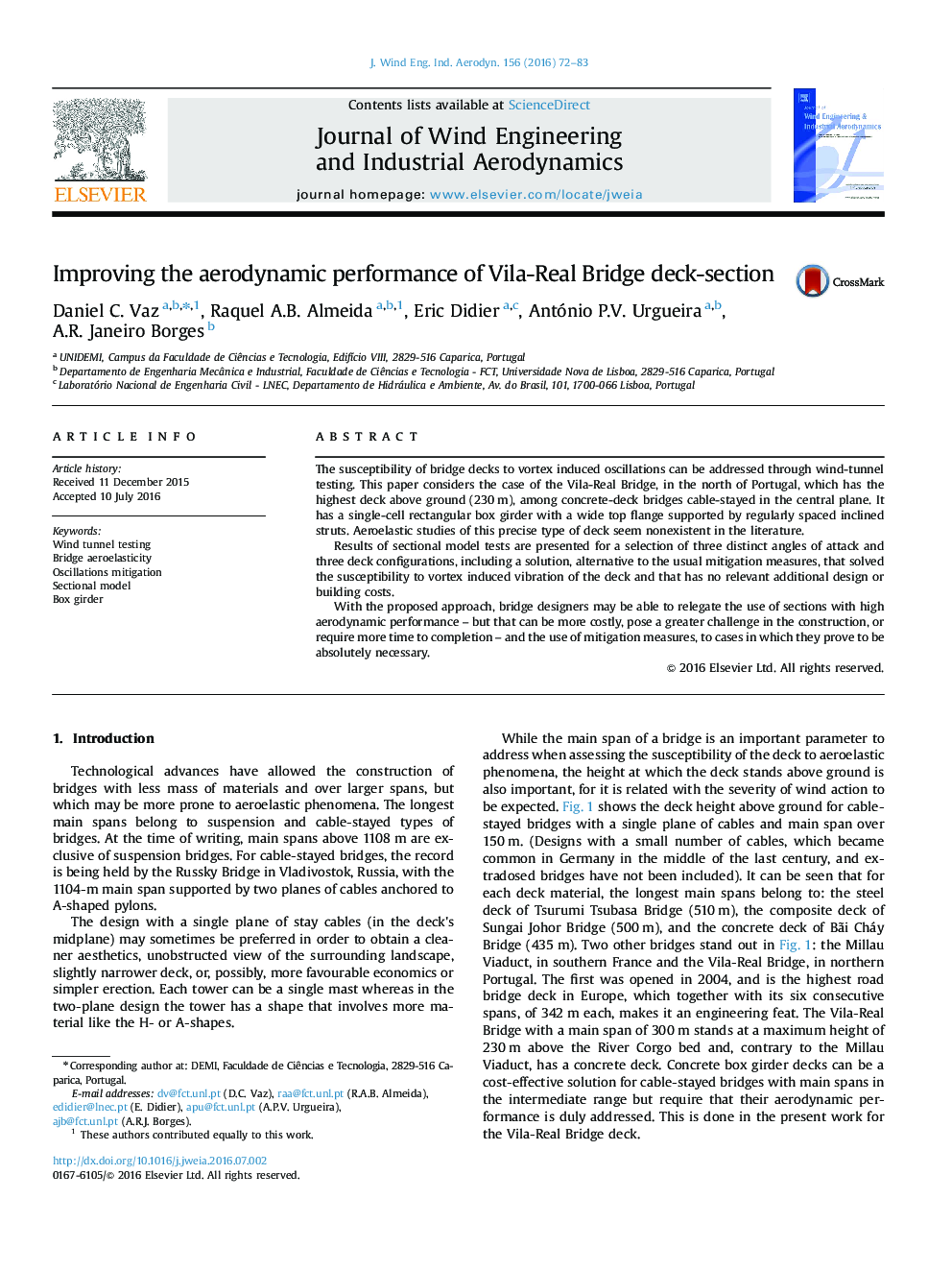| Article ID | Journal | Published Year | Pages | File Type |
|---|---|---|---|---|
| 292442 | Journal of Wind Engineering and Industrial Aerodynamics | 2016 | 12 Pages |
•The bridge has the highest concrete deck with multiple stays in the central plane.•Wind-tunnel tests of the original deck show susceptibility to aeroelastic phenomena.•Vortex shedding excitation is related with flow features above and below the deck.•Appropriate profiling of critical sharp edges practically eliminates oscillations.•Solution requires no additional building costs or changes in the structural design.
The susceptibility of bridge decks to vortex induced oscillations can be addressed through wind-tunnel testing. This paper considers the case of the Vila-Real Bridge, in the north of Portugal, which has the highest deck above ground (230 m), among concrete-deck bridges cable-stayed in the central plane. It has a single-cell rectangular box girder with a wide top flange supported by regularly spaced inclined struts. Aeroelastic studies of this precise type of deck seem nonexistent in the literature.Results of sectional model tests are presented for a selection of three distinct angles of attack and three deck configurations, including a solution, alternative to the usual mitigation measures, that solved the susceptibility to vortex induced vibration of the deck and that has no relevant additional design or building costs.With the proposed approach, bridge designers may be able to relegate the use of sections with high aerodynamic performance – but that can be more costly, pose a greater challenge in the construction, or require more time to completion – and the use of mitigation measures, to cases in which they prove to be absolutely necessary.
